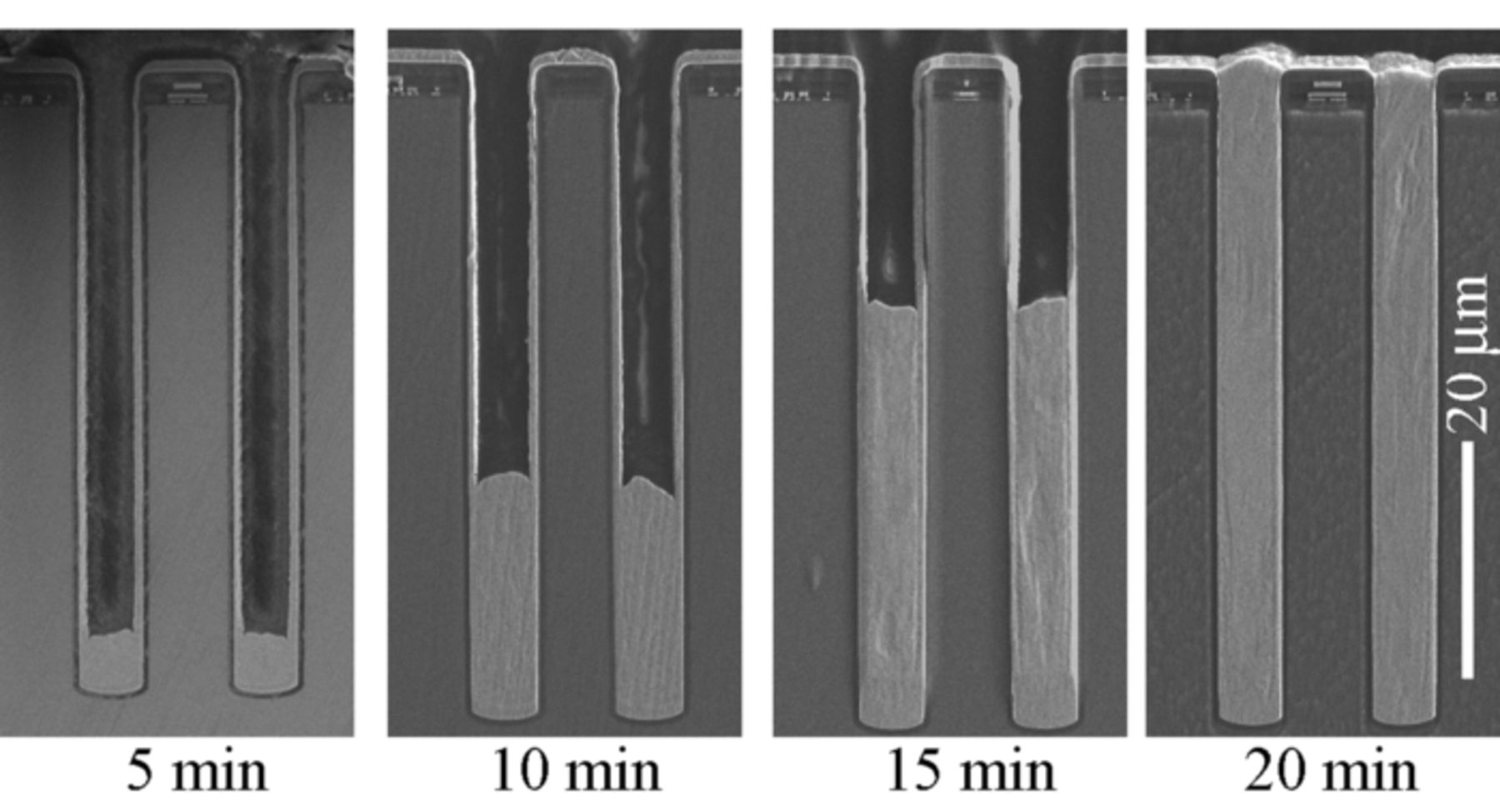What is Extreme Fill?
Extreme fill theory explains one particular mechanism of feature filling in electroplating. The mechanism that results in extreme fill is similar in a number of respects to both the curvature enhanced accelerator coverage (CEAC) and leveling mechanisms, which are both modulated by additives in the electrolyte. In contrast to the CEAC and leveling mechanisms, the defining characteristic of extreme fill is the highly segregated deposition that occurs only on the very bottom of the feature with a complete absence of deposition on the top surface and walls of the feature. The image below of deposition in a silicon via demonstrates just how segregated extreme fill can be.

The simplest explanation of extreme fill requires just two equations, an equation for the deposition rate, , given by
and an equation for the coverage of an adsorbed additive (known as the suppressor) at the electrode/electrolyte interface, , given by
where varies between 0 (no suppression) and 1 (fully suppressed). The coverage of suppressor is governed by the competition between adsorption and consumption controlled by and , respectively. The concentration of suppressor in the bulk electrolyte is given by .
There are two steady state solutions to these equations, and . These two states corresponding to the “on” and “off” states of deposition, which manifests in the extreme fill behavior demonstrated in the image. Now, if then the stable solution is , but if , the stable solution is given by . The control parameter here is , which varies spatially and can change rapidly descending down the trench and thus enables an “off” state at the top of the trench and an “on” state at the bottom of the trench. To reach these steady “on” and “off” states, the equation for the electric potential must also be coupled into the problem (see the full set of equations on the extreme fill website).
The movie below is generated by a pseudo steady state model of extreme fill outlined in this recent paper. It shows the normalized potential (cyan), bulk suppressor concentration (green), cupric concentration (red) and suppressor coverage (blue). The region where m corresponds to the inside of the feature. When the steady state is obtained, deposition is only occurring at the very bottom of the feature m where the blue line is less than 1 and bulk suppressor concentration (green line) is very close to zero.
For further details about the extreme fill mechanism see the paper, which contains a complete description of the psuedo steady-state model. The extreme fill website and corresponding Github repository contain the necessary documentation and code to run the FiPy model of extreme fill as well as generate the data to completely reproduce the images in the paper.
comments powered by Disqus